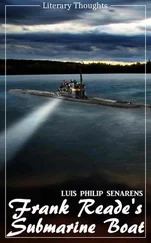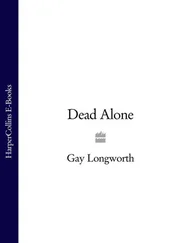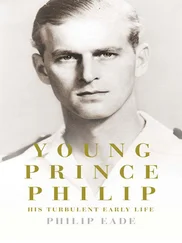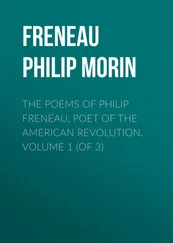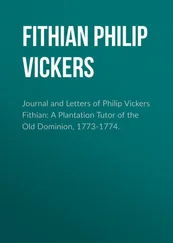Some Ukrainian historians have tried to argue that a treaty was negotiated at Pereiaslav; that acceptance of Russian rule was conditional on the Tsar’s honouring the terms; and that the Cossacks would be legally entitled to switch their allegiance if the Tsar reneged on any of his promises. But this misrepresents the evidence. The oaths that Khmelnytsky and the other Cossacks took were unconditional promises of allegiance. Colonel Bogun, the only notable who refused to swear, evidently understood this. Furthermore, even though the Cossack leadership had probably received intimations of what the Tsar was prepared to offer, the formal negotiations that defined what Cossack privileges were to be did not take place before the ceremony at Pereiaslav, but two months after.
The terms set out in the charter of privileges the Tsar then issued to his new subjects were better than could be got from Poland: an increase in the register of registered Cossacks (who were paid from state funds) from 40,000 to 60,000, confirmation of their previous privileges, freedom for the Orthodox Church, and the exclusion of Jews. 26As expected, Poland contested the Cossacks’ new allegiance and thereafter exploited differences within the ranks of the Cossack elite to promote rebellion. Securing Ukraine for Russia was to prove a long and costly business.
Though operations had to cover a wide front, the main thrust of Russia’s efforts in the campaign of 1654 was against Smolensk. The Cossacks represented their war as a crusade; the Tsar referred to it as a ‘blessed affair’ whose purpose was ‘to protect the true, Orthodox Christian faith’, and the army reflected this religious purpose. Priests and holy icons accompanied the troops, and many of the military colours they carried were sewn or painted with coloured crosses, representations of Jesus, of cherubim with flaming swords, of the Archangel Michael and of St George. Furthermore, the soldiers were ordered to go into battle reciting the Jesus prayer. 27That most of the foreign officers who marched with them were Catholics or Protestants rather than Orthodox Christians was of little concern, although a district of Moscow had recently been allotted for their exclusive use so that they could enjoy their own religious services without contaminating the civilian population.
The campaign succeeded. Smolensk surrendered in September after a three-month siege. A Cossack force provided material assistance, but the deciding factor was the artillery which the Russian commissariat had managed to bring up and which was deployed under the experienced eye of General Leslie in the presence of the Tsar himself But, though matters at the front went well, there was bad news from Moscow. There had been a virulent outbreak of bubonic plague. This delayed the Tsar’s triumphant return until the following February. He arrived to find that the losses had been grievous. Both the president of the ministerial committee left in charge of the capital and his deputy had died; so had all but fifteen servants left in the palace, half the translators in the Department of Foreign Affairs, and over 80 per cent of the city’s monks — a particularly grievous blow, since monks cared for the sick and unfortunate. Many other cities suffered too. Three thousand died in Kostroma, half the population of Tver perished, and more than half in Kaluga. The Tsar helped raise morale, making a brave show parading war trophies before the surviving population. Then he returned to the front.
The campaign of 1655 was even more successful. Virtually every city of importance in Lithuania, including Vilna, was captured. Poland was helpless. Swedish forces had invaded in June, and the Polish court fled south to take uncertain shelter in the fortified monastery of Czestochowa. This prompted a radical rethinking of Russian strategy and a sudden switch of alignment. An accommodation was reached with the Polish king; Sweden now became the enemy, and the objective of the 1656 campaign was the famous port of Riga.
Once an independent Hansa city, Riga was now a Swedish possession. Russia had wanted such a trading outlet since the time of Ivan the Terrible (whom Tsar Alexis admired and on whom he modelled himself to some extent), and only five years earlier the Tsar’s interest had been raised further by a project, presented by a Frenchman, to build ships for the international market. Gdansk was also considered. Only the previous year the Tsar had offered it his protection. But, with his sights now trained on Sweden, the army marched on Riga.
Its defences were strong and up to date, but the siege was methodical and the equipment strong. A learned work of the time published by Samuel Pufendorf, historiographer to the Swedish king and a pioneer of international law, contains a fascinating panoramic print of the action. It shows the Tsar, his back to the artist, on a hill overlooking the city, attended by his staff. They wear tall bearskin hats and are elegantly mounted as they discuss the situation and decide what is to be done. The Russian encampment is shown — the positions of the batteries, the placements of the infantry, the supply dumps and bivouacks, and, in between, messengers scurrying to deliver orders and reports. Mortar shells are lobbed in high trajectory over the walls; cannon shots smash into the fortifications, sending out sprays of splintered stone; a Russian powder store blows up. Through this scene of action flows the Western Dvina, which leads to the object of all these exertions: the estuary and the open sea.
The prize eluded Russia that year. It might well have been taken the next, had the Tsar only persevered, for Sweden was in financial straits and might not have been able to sustain its resistance. But the siege was not resumed. Troubles in Ukraine required a diversion of Russia’s efforts.
When Khmelnytsky died, in 1657, deep fissures appeared within the Cossack ranks. Some, the more substantial sort who owned farms and hankered after the privileges and freedom of the Polish nobility (who were never freer than in that age), came to resent the high-handed way in which the Tsar’s representatives dealt with them. They aligned behind the new hetman, Vygovsky. The poorer Cossacks, on the other hand, feared that their interests would be sacrificed, that they might lose their status as Cossacks, and even be reduced to serfdom. Their fears were soon justified. In September 1658 Vygovsky abandoned his allegiance to the Tsar and signed an agreement with Poland. This conceded rights to the Orthodox Church in Ukraine and to its burghers, but it also gave noble status to the top 300, predominately landed, Cossacks and reduced the number of registered Cossacks by half, which prompted an armed reaction by those dispossessed.
Regional divisions, between east and west Ukraine, the north and the Zaporozhian Sech in the south, which was self-governing but whose membership overlapped with the Cossack community beyond its borders, complicated the situation. Since the Cossack way was democratic, 28these divisions and differences soon translated into anarchy, which in turn encouraged interference from outside powers — the Ottoman Empire as well as the Crimean Tatars; Sweden as well as Poland. Restoring order now became Moscow’s priority. But how to do it in the most economical and effective way? In October 1659 the Tsar, who had backed Khmelnytsky’s son, Iurii, as hetman and sent troops in to back up his authority, approved a new deal for the Cossacks — not a treaty, but articles granted in response to a petition. These allowed the Cossacks to apply their laws in the traditional way, and to exercise their rights without interference, but insisted that they present themselves for service as required. They were not to enter into negotiations with Poland or any other foreign power, nor to slander the state of Muscovy on pain of execution. 29Little more than a year later, however, Ukraine was in anarchy again.
Читать дальше





![Stephan Orth - Behind Putin's Curtain - Friendships and Misadventures Inside Russia [aka Couchsurfing in Russia]](/books/415210/stephan-orth-behind-putin-s-curtain-friendships-a-thumb.webp)
